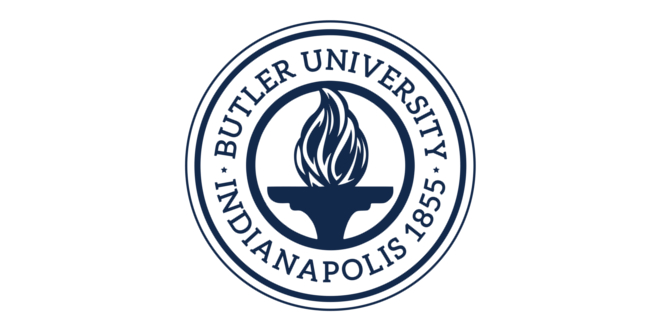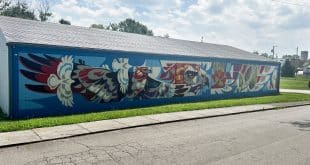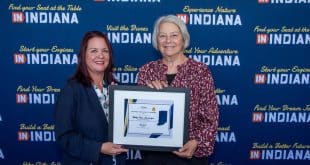INDIANAPOLIS– A new sciences complex is set to take shape on Butler University’s campus, as the Board of Trustees approved the project during their June meeting.
The $100 million renovation and expansion is the largest investment ever by the Trustees in Butler’s future. The project includes new high-tech classrooms designed to promote learning by doing, labs that mimic the set-up at top research companies, and work spaces meant to encourage cross-disciplinary collaboration. The facility will reflect the interdisciplinary nature of science, and eliminate labs designed for a single purpose. Classroom spaces will enable faculty to step away from the podium and move among students in a more hands-on approach to instruction.
“We have outstanding faculty, we have outstanding students, we have outstanding programs, and this project will allow us to take all of that to another level,” says Jay Howard, Dean of the College of Liberal Arts and Sciences, who was also part of the project’s original planning committee in 2011. “Science is an ever-changing discipline, and now we will have the flexible facilities to lead the field into the future.”
Phases I and II of the project are expected to start very soon, with a predicted 18-month timeline. To date, $27.5 million has been raised for the project. The goal is to raise $42 million of the $100 million total cost through philanthropic support.
Thus far, major donations have come from the Richard M. Fairbanks Foundation, Frank Levinson ’75, Craig Fenneman ’71 and Mary Stover-Fenneman, Trustees Lynne Zydowsky ’81, Josh Smiley, Katie and Len Betley, Lou and Laura Glazer, Jane and Robert Wildman, and Dick Wood.
The project will start with the creation of a connector building–linking Gallahue Hall and the Holcomb Building–that will house classrooms, study areas, and research labs dedicated to Chemistry, Astronomy, Physics, Engineering, and Psychology. The Phase I expansion will add nearly 44,000 square feet, as well as a nearly 13,200 square-foot atrium. This additional space will create a sciences corridor to house all of Butler’s undergraduate sciences programs in a central complex.
“This is a significant and historic step forward as Butler continues to transform education for the needs of students and employers in the 21st century,” President Jim Danko says.
“Our investment in the sciences, coupled with our new business school facility, provides our campus with the world-class infrastructure necessary to support critical skill development integrating business, science, innovation, and technology. These investments are also part of Butler’s commitment to the Central Indiana region as we strive to attract, retain, and develop the talent necessary for our community’s collective success.”
A net importer
The vast majority of Butler science graduates choose to stay in Indiana after graduation. In 2016, for example, 63 percent of science graduates remained in Indiana.
“Butler is a net importer of scientific talent,” Howard says. “Rather than be a part of the brain drain problem, we are actually importing talent to Indiana.”
Butler has also long been a leader in preparing women for STEM careers. For many years, the majority of Butler’s science majors have been women. Butler also has more Lilly Scholars than most institutions of a similar size, which speaks to the quality of its programs.
With new facilities, Butler’s ability to prepare homegrown talent for STEM careers in the region will only grow.
“We are honored to support the continued growth of the sciences program at Butler, which is a legacy grantee of our foundation and an institution that our founder, Richard M. Fairbanks, strongly supported,” says Claire Fiddian-Green, president and CEO of the Richard M. Fairbanks Foundation. “Among our foundation’s focus areas is supporting Indianapolis’ thriving life sciences sector and the STEM workforce to support it. Fueling a robust pipeline of science students at Butler helps to advance those goals.”
To prepare students for careers in a discipline that is evolving all the time, the new sciences complex needed a design that could change with new discoveries and new educational approaches.
Lab spaces will be flexible, students and faculty will work side-by-side, and areas of research will be grouped together to maximize collaboration. In addition to visiting other universities’ facilities for ideas, the planning team visited Eli Lilly, Roche, and Corteva to get an idea of what labs at cutting-edge research companies look like.
“Scientific inquiry demands collaboration,” Provost Kate Morris says. “Exciting work is happening at the intersection of multiple disciplines. The design of the new facility encourages this work by creating space that breaks down the traditional barriers between areas of study.”
Endless possibilities
Phase II of the project will include renovating and repurposing the Holcomb Building, which will be vacated by the Lacy School of Business as it moves into its new building opening this fall. Phase III will involve a complete renovation of Gallahue Hall, which currently houses several science departments and has not been renovated since its construction in 1973.
Over the last 10 years, enrollment in the sciences at Butler has flourished, growing more than 70 percent. In addition, every student at Butler takes a science course because of the core curriculum.
With new facilities will come a plethora of new opportunities. New programs are being explored, such as Neuroscience and Data Science. Butler is already home of the country’s largest Undergraduate Research Conference, and now, the cross-disciplinary lab spaces will inevitably lead to new research projects. “I think it is hard to overstate the importance of this project, as it will prepare Butler






